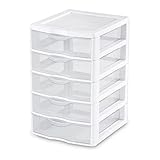Organization Tips and Ideas for Your Disorganized Child
You CAN teach your child to be organized through the use of these three Organization Tips and five Organization Ideas.
If your child is chronically disorganized, it can be a real challenge for your child to be successful in school.
Organizational skills are not typically taught in school, so your child will benefit if you step in to help with these organization tips.
Three Essential Organization Tips for Organized Kids:
The main skills you need to teach your child to help him become more organized include –
Organization Tip #1: Use established routines for every day practices to build habits.
For example, your child needs to use the same process each day to gather his books, assignments, and other items for his school day at the beginning and ending of each school day. Teaching your child a regimented routine for the start and end of his school day will build in a habit of organization.
Organization Tip #2: Use checklists to complete routine tasks.
You’ll have to help your child mindfully engage with the checklist by verbally coaching him through the list each day until using the checklist becomes a habit. While this may seem like the same task as establishing a routine, it is a bit different. Using the checklist(s) should become part of your child’s routine as established in #1 above.
Organization Tip #3: Teach Your Child Assignment Segmenting and Scheduling.
A child with organizational difficulties usually lacks a natural ability to see how to divide big assignments into smaller chunks. Again, you will need to work directly with your child, verbally coaching him through the division of assignments into smaller steps. You’ll need to help him write down each step on a schedule so he’ll be able to make progress each day without waiting until the last moment.
Five Organization Ideas or Tools for Helping Your Child Learn Organization Skills
1) Organizing the Disorganized Child – This book has great reviews and comes highly recommended. If you get nothing else, this book will help you help your child.
2) Daily Academic Planner – Your child will need help learning how to divide up large assignments among the days from the date given through the due date.
Children with organizational and planning difficulties seldom know how to break a big task up into smaller subtasks. You will have to help your child with this process repeatedly until he learns to do it himself.
You can use an academic planner to schedule work and to note assignment due dates. Teaching my boys how to segment big assignments into smaller steps has helped them immensely throughout high school, especially with their dual enrollment courses.
3) Velcro Binders
– If your child is like mine, his notebook comes home as a scattered jumble of papers stashed loosely in his bookbag. Papers fall out of an ordinary notebook and easily get damaged or lost.
We found notebooks with zippered or velcroed closures help the papers make the journey between home and school without getting lost. Additionally, letting each of my boys pick out a “cool” binder at the beginning of the school year helped with their usage compliance.
4) Pocket Page Protectors – These are great for your child’s checklists for his different routines. Having a pocket protector keeps the paper nice without tearing the holes and getting messed up.
The plastic surface allows your child to use a dry erase marker to check off completed items, then the surface can be wiped clean for the next day’s use. When a page protector reaches a point where it needs to be replaced, you can often swap it for a new protector and use the same checklist paper. If you use a paper checklist without a page protector, you will likely have to make a new copy of the checklist frequently.
5) Stackable Drawers or Bins – Label each drawer with a different subject or by “Homework To Be Done,” “Assignments in Progress” and “Homework Finished.” Having the stack of drawers near your child’s homework spot lets him come home, put his homework papers in the “To Be Done” drawer, then move it to the other drawers when he completes the assignment. When he’s done, he can grab the stack of completed papers and put them in his velcro binder. Having the intermediate drawer helps for assignments that take multiple days to finish.

When we began homeschooling, we used the Sterilite ClearView stackable drawers. We chose to buy two sets of three and stack them for a six-drawer stack. We then labeled each drawer with the individual subjects. Each of my sons had a stack of six drawers next to his desk.
It might interest you to know that we were able to successfully teach our boys with these organizational tips and by teaching them planning skills. This is a feat we are particularly proud of since my youngest was deemed “The Human Tornado” when he was young. He was anything but organized, but consistent teaching over multiple years enabled him to become organized throughout his teen years. Now he’s more organized than I am!! Maybe I need someone to walk me through organization each day.
I’d say organizational skills are among the most difficult to establish when a child is highly disorganized. Learning to use routines, checklists, and breaking big tasks into small, manageable steps requires direct instruction for months or years. Good organization ability is not a skill that is learned overnight.
That said, once a child learns to rely upon routine, checklists, and planning of his assignments, he will reach a point where he incorporates these tools and practices into his everyday life management. The skills are well worth teaching both for your child’s schooling and for his long-term success in life.


